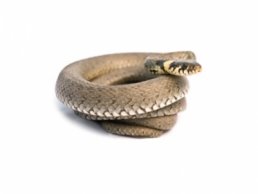How to get rid of Snakes in Your Crawl Spaces
Snakes make their way into houses in search of food and shelter. Since these cold-blooded reptiles must regulate their body temperatures, they seek out quiet, shaded hiding spots. Encounters with a snake in a crawl space can be dangerous for residents. A bite from a nonvenomous species can still result in tissue damage and infection.
Entry Points
Lawn debris and tall grass often harbor snakes. When hunting for mice or rats, these reptiles may follow their prey indoors. Snakes typically get inside through basement windows or foundation cracks. Residents dealing with rodent infestations may also find snakes in crawl spaces or the basement.
Snake Exclusion
Homeowners can prevent snakes in crawl spaces by sealing all possible openings. Filling in foundation crevices and repairing windows keep rodents as well as snakes from getting indoors. Removing yard clutter and controlling rats or mice also helps deter the pests.
Getting Rid of Snakes in a Crawl Space
Removal is dangerous due to the serious risk of a snake bite. Homeowners experiencing problems should contact Critter Control. Our technicians have the training to handle snakes in a crawl space.
Learn more about snake removal.
Get them out.
Keep them out.®
Experiencing a wildlife or pest issue? We can help! Complete this form and your local Critter Control® office will contact you to assist.
- Baby Snakes: Identification & Behavior
- Snake Activity in Winter
- Non-Venomous Snake Removal
- Venomous Snake Removal
- Snake Diet
- Snake Identification: Venomous and Non-Venomous Snakes
- Life Cycle of a Snake: Reproduction & Removal
- Types of Snakes in North America
- Snakes in Attics
- Snakes in Your Basement or Crawl Space
- Snakes in the Bathroom
- Snakes in the Kitchen – Entry & Prevention
- Snakes in a Garage or Shed
- Snakes in Your Grass or Yard
- Snakes in Your Pool
- Snakes Under Your House or Deck
- Snake Poop & Droppings
- Snake Holes: Problems & Removal
- Snakes in the House
